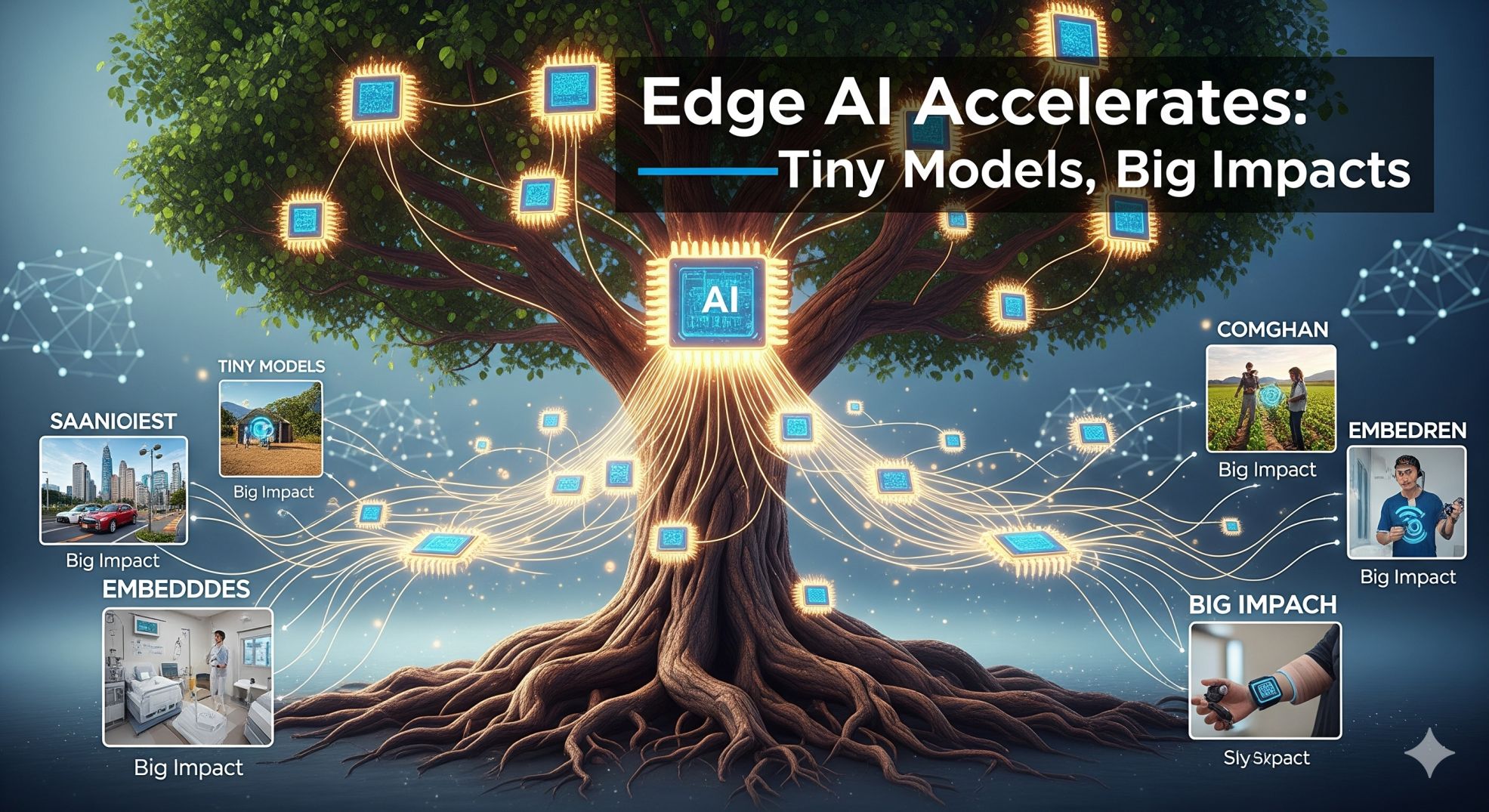Bangalore — The expansion of AI beyond cloud datacenters onto chips at the network edge is entering a new phase, driven by advances in compact model architectures, specialized accelerators, and a growing emphasis on privacy and latency-sensitive applications. From smartphones and industrial sensors to automobiles and retail kiosks, on-device intelligence is becoming a practical option for real-time inference and reduced data egress.
Recent engineering breakthroughs have pushed the frontier of what “tiny” models can achieve. Techniques such as pruning, quantization, knowledge distillation and neural architecture search enable deployment of capable neural networks that occupy megabytes rather than gigabytes. These reduced footprints, combined with hardware advances — low-power NPUs, microcontrollers with vector extensions, and dedicated inference ASICs — let developers run complex vision and language tasks locally while keeping energy consumption within device constraints.
Privacy and resilience are central drivers of the edge push. On-device processing reduces the need to transmit raw sensor data to the cloud, limiting exposure of personal information and lowering latency for critical decisions like driver-assist interventions or factory anomaly detection. For settings with constrained connectivity, such as remote monitoring in agriculture or wildlife conservation, edge intelligence enables continuous operation and immediate alerts even when network links are intermittent.
However, edge deployments come with trade-offs. Model updates require secure over-the-air provisioning and robust rollback strategies; hardware fragmentation complicates cross-device portability; and debugging distributed fleets demands novel telemetry and remote diagnostics. Companies building edge-first products are investing in lightweight model orchestration systems, modular inference runtimes, and simulation environments to validate behavior across diverse hardware profiles.
Industry applications are proliferating. Retailers use on-device vision for checkout automation and shelf monitoring; automakers integrate local perception stacks for redundancy in advanced driver assistance systems; consumer electronics vendors embed natural-language interfaces for privacy-preserving assistants. In industrial contexts, edge AI drives predictive maintenance and real-time control loops where milliseconds matter.
The economics are shifting too. Running inference at the edge reduces cloud compute costs and bandwidth usage over time, improving total cost of ownership for large-scale deployments. But initial engineering costs can be high, and organisations must balance those against anticipated savings and regulatory benefits.
As the ecosystem matures, standards and toolchains are evolving to reduce fragmentation: portable model formats, unified runtimes, and certification programs for safety-critical usage are gaining traction. The edge’s promise is clear: smarter devices, lower latency, and stronger privacy guarantees — but realising that promise requires tight integration of model design, hardware selection, and scalable operations.










